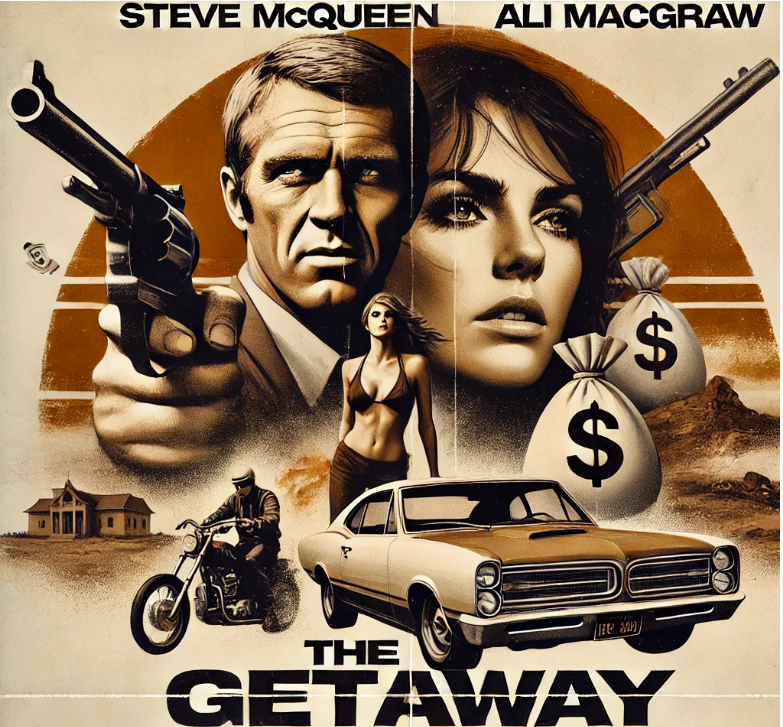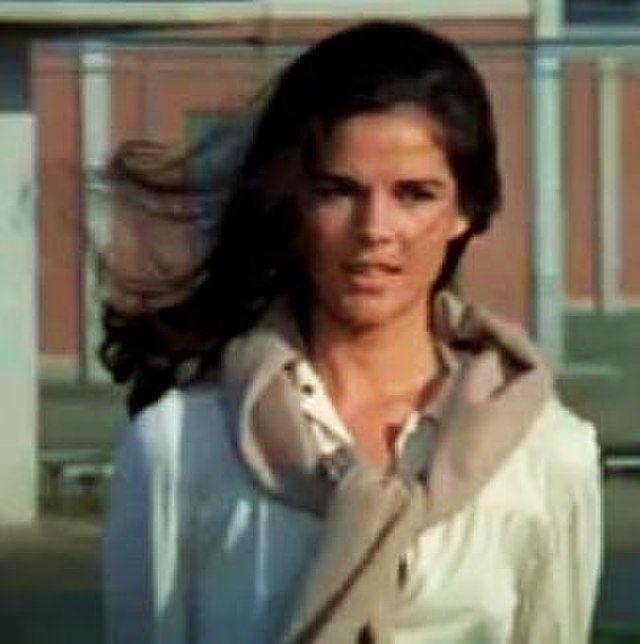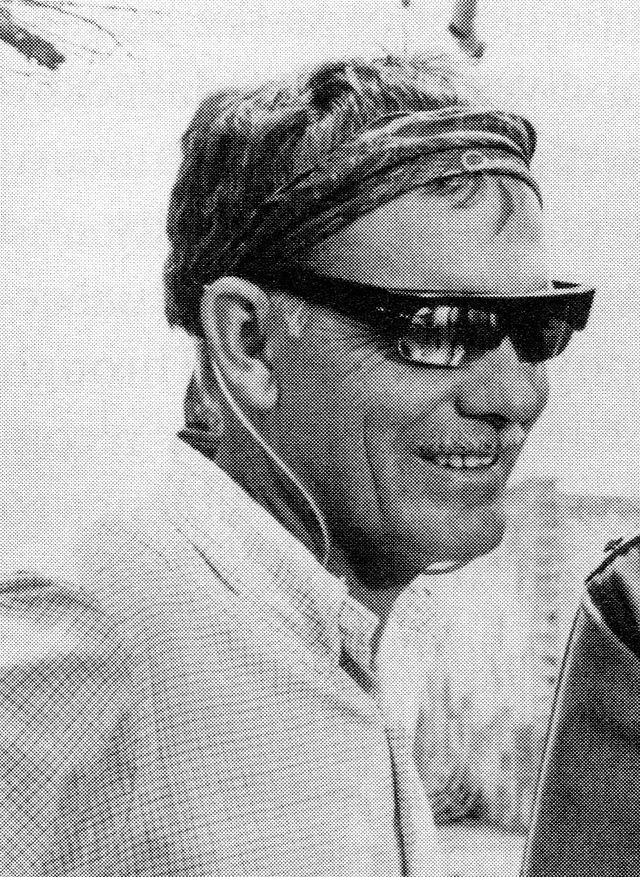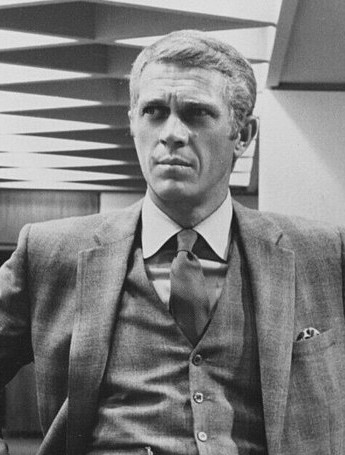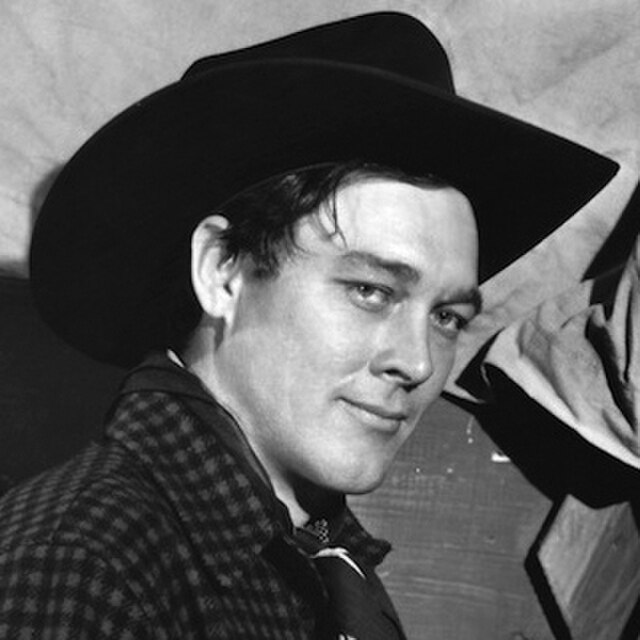The Getaway – 1972
Summary
The Getaway is a gripping crime thriller directed by Sam Peckinpah, starring Steve McQueen and Ali MacGraw. The film is based on the 1958 novel by Jim Thompson, adapted for the screen by Walter Hill. The story unfolds with intensity, romance, and betrayal, drawing audiences into a tightly wound tale of criminals on the run.
The film begins with Carter "Doc" McCoy (Steve McQueen), a career criminal, languishing in a Texas prison. Desperate for freedom, he strikes a deal with a corrupt businessman, Jack Beynon (Ben Johnson). Beynon agrees to secure Doc's release on the condition that he orchestrates a bank robbery for him. With few options, Doc agrees and is paroled. He reunites with his wife, Carol (Ali MacGraw), who played a role in securing the deal by sleeping with Beynon, a betrayal that sows seeds of distrust between the couple
The bank heist is meticulously planned, but things go awry. Doc, Carol, and their partners—Rudy Butler (Al Lettieri) and Frank Jackson—carry out the robbery, but tensions quickly rise. Rudy, a cold-blooded and duplicitous criminal, kills Frank and double-crosses Doc and Carol. Rudy, however, underestimates Doc’s cunning and ends up wounded as Doc and Carol escape with the stolen money.
The couple embarks on a tense journey to the Mexican border, pursued by both Rudy and the authorities. Along the way, they face a series of dangerous encounters that test their survival skills and their fragile trust in one another. Rudy, despite his injuries, forces a young couple, Harold and Fran Clinton (Jack Dodson and Sally Struthers), to aid him in his pursuit, creating a parallel story of manipulation and violence.
Doc and Carol’s journey is a blend of action-packed sequences and quieter moments that reveal the complexity of their relationship. Doc struggles with feelings of betrayal over Carol's involvement with Beynon, while Carol remains steadfast in her devotion to Doc. Their relationship is fraught but ultimately resilient, as they rely on each other to evade capture and stay alive.
In the film’s climactic sequence, Doc and Carol reach a seedy hotel in El Paso, where a final showdown takes place. Rudy catches up to them, leading to a brutal and tense confrontation. Doc outmaneuvers Rudy, killing him, and escapes with Carol. The couple, bloodied but unbroken, crosses into Mexico, leaving their chaotic past behind as they drive into an uncertain future.
________________________________________
Analysis of The Getaway
Sam Peckinpah’s direction elevates The Getaway from a standard crime caper to a layered exploration of trust, loyalty, and survival. The film balances explosive action with moments of psychological tension, reflecting Peckinpah's trademark style of blending violence with character-driven storytelling.
• Themes:
o Trust and Betrayal: The film’s central theme revolves around trust. Doc and Carol's relationship is tested repeatedly, from Carol’s initial betrayal with Beynon to her unwavering support during their escape. The theme is echoed in the dynamics between Doc, Rudy, and other secondary characters.
o Survival: The couple’s journey is a relentless fight for survival, both physically and emotionally. The film examines what people are willing to sacrifice for freedom and each other.
• Characters:
Steve McQueen delivers a restrained yet magnetic performance as Doc, exuding a quiet intensity that underscores the character’s intelligence and resourcefulness. Ali MacGraw, while criticized at the time for her limited acting range, effectively portrays Carol’s vulnerability and determination. Al Lettieri’s Rudy is a memorable antagonist, his ruthless and manipulative nature adding a layer of menace to the story.
• Direction and Cinematography:
Peckinpah’s direction is marked by his skillful use of slow-motion action sequences, a technique he famously employed in The Wild Bunch. Lucien Ballard’s cinematography captures the stark, sun-drenched Texas landscapes, creating a sense of isolation that mirrors the couple’s predicament.
• Music:
Quincy Jones’ score adds a dynamic layer to the film, blending jazz, blues, and suspenseful orchestration. The music enhances the tension of chase scenes while underscoring the emotional moments between Doc and Carol.
• Symbolism:
The film uses vehicles and motion as symbols of freedom and entrapment. The getaway car becomes a recurring motif, representing both the couple’s escape and their confinement within a life of crime. The dusty, desolate roads they traverse mirror their uncertain path forward.
• Gender Dynamics:
Carol’s character, while integral to the plot, is often overshadowed by Doc. Critics have debated whether she is portrayed as an equal partner or a subordinate. Her actions, such as shooting Rudy to save Doc, suggest agency, but her dependence on Doc complicates this reading.
• Violence:
True to Peckinpah’s style, the film does not shy away from brutal violence, yet it avoids gratuitousness. The violence serves the narrative, emphasizing the stakes and the desperation of the characters.
________________________________________
Legacy
The Getaway was a commercial success, grossing approximately $36 million against its modest budget of $3.3 million. The film cemented Steve McQueen’s status as a Hollywood icon and showcased Sam Peckinpah’s ability to craft gritty, compelling stories. While some critics viewed it as a standard crime thriller, its themes, performances, and stylistic choices have earned it a lasting place in cinematic history.
The film’s influence can be seen in subsequent crime and action films, particularly in its depiction of morally ambiguous characters and its focus on the psychological toll of life on the run. A 1994 remake starring Alec Baldwin and Kim Basinger brought the story to a new generation, though it failed to replicate the original’s impact.
The Getaway remains a classic, celebrated for its tense storytelling, memorable performances, and Peckinpah’s masterful direction.
Trailer The Getaway
Full Cast
• Steve McQueen as Carter "Doc" McCoy
• Ali MacGraw as Carol McCoy
• Ben Johnson as Jack Beynon
• Al Lettieri as Rudy Butler
• Sally Struthers as Fran Clinton
• Slim Pickens as Cowboy
• Richard Bright as The Thief
• Jack Dodson as Harold Clinton
• Dub Taylor as Laughlin
• Bo Hopkins as Frank Jackson
• Roy Jenson as Cully
• John Bryson as Fred
• Tom Runyon as the Motel Proprietor
• Bill Hart as the Baggage Clerk
• Pepe Serna as the Boy at Garbage Dump
Analysis of Sam Peckinpah’s Direction in The Getaway (1972)
Sam Peckinpah's direction in The Getaway exemplifies his ability to craft a gritty, visceral narrative while exploring the psychological complexities of his characters. Known for his expertise in blending action, violence, and emotional depth, Peckinpah brings a distinct style to the film, transforming what could have been a standard crime thriller into a layered and intense cinematic experience.
________________________________________
Peckinpah’s Signature Style
• Realism in Violence:
True to Peckinpah's reputation, The Getaway features a raw and unflinching portrayal of violence. While the violence is not as operatic as in The Wild Bunch, it is just as effective in underlining the story's stakes. Gunfights, double-crosses, and physical confrontations are depicted with a brutal realism that avoids glorification. This gritty approach amplifies the tension and grounds the film in an almost tangible reality.
• Slow-Motion Action:
Peckinpah’s hallmark use of slow-motion sequences is employed sparingly but effectively. This technique heightens key moments, such as shootouts and confrontations, allowing the audience to absorb the emotional and physical stakes of the action. The deliberate pacing of these sequences contrasts with the otherwise taut, fast-moving narrative.
• Tension and Atmosphere:
From the opening scenes of Doc McCoy’s incarceration to the final showdown in El Paso, Peckinpah masterfully builds tension. The pacing is deliberate, alternating between high-octane action and quieter moments of introspection or interpersonal conflict. This ebb and flow keep the audience engaged while reflecting the unpredictability of the characters’ journey.
________________________________________
Character-Driven Storytelling
Peckinpah’s direction is deeply character-focused, ensuring that the emotional dynamics between Doc and Carol McCoy drive the story just as much as the heist and chase. He delves into the strained but resilient relationship between the couple, exploring themes of loyalty, betrayal, and survival.
• Doc McCoy:
Steve McQueen’s portrayal of Doc is restrained and calculated, and Peckinpah uses this stoicism to underscore the character’s intelligence and resourcefulness. Doc is not just a man of action but a thinker, and Peckinpah captures this duality with lingering close-ups and scenes that highlight his decision-making under pressure.
• Carol McCoy:
While Ali MacGraw’s performance has been critiqued for its limitations, Peckinpah ensures Carol is more than a passive accomplice. Through her actions—like shooting Rudy to protect Doc—Peckinpah emphasizes her resilience and her complex emotional bond with her husband. Their relationship, fraught with mistrust yet underscored by undeniable love, adds depth to the narrative.
• Rudy Butler:
Peckinpah crafts Rudy (Al Lettieri) as a chilling antagonist. His unpredictability and cruelty create palpable tension, particularly in his interactions with the Clintons. Peckinpah uses Rudy as a counterpoint to Doc, highlighting the moral ambiguity of the characters in this violent world.
________________________________________
Visual Storytelling and Cinematography
Peckinpah’s collaboration with cinematographer Lucien Ballard results in visuals that capture both the sprawling Texas landscapes and the claustrophobic tension of urban chases and hideouts. The visuals serve as an extension of the story’s mood:
• Wide Shots and Landscapes:
The barren Texas landscapes symbolize isolation and danger, reflecting the couple’s precarious situation. The vastness of the open roads juxtaposes the sense of entrapment they feel, both physically and emotionally.
• Close-Ups and Intimacy:
Peckinpah uses close-ups to capture the unspoken tension between Doc and Carol, whether it’s a glance of suspicion or a fleeting moment of connection. These intimate shots add emotional weight to their journey, reminding viewers that their fight for survival is as much about preserving their relationship as it is about escaping danger.
________________________________________
Thematic Exploration
Peckinpah infuses The Getaway with his recurring themes of morality, loyalty, and the inevitability of violence:
• Morality in a Corrupt World:
None of the characters are purely good or evil, a hallmark of Peckinpah’s storytelling. Doc, while portrayed as a hero, is a hardened criminal. Carol, though loyal, is guilty of betrayal. Even the antagonists, like Rudy and Beynon, operate within their own skewed moral codes. This gray morality adds depth to the narrative, forcing the audience to question their sympathies.
• The Cost of Freedom:
The film repeatedly emphasizes the sacrifices required for freedom. Doc and Carol’s journey is physically grueling and emotionally taxing, underscoring the idea that escape—whether from prison, enemies, or a life of crime—always comes at a cost.
• Violence as Survival:
In Peckinpah’s world, violence is not gratuitous but necessary. Every act of violence in The Getaway serves a purpose, whether it’s self-defense, revenge, or a desperate bid for survival. Peckinpah’s handling of violence forces the audience to confront its brutal inevitability.
________________________________________
Peckinpah’s Treatment of Gender Dynamics
While The Getaway is largely driven by Doc’s actions, Peckinpah gives Carol moments of agency that were notable for the time. Carol is not merely a damsel in distress; she participates in the heist, makes critical decisions, and protects Doc when needed. However, her earlier betrayal with Beynon complicates her role, making her both a victim of circumstance and an active participant in the couple’s troubles. Critics have debated whether Peckinpah’s portrayal of Carol empowers or diminishes her, reflecting the complex gender dynamics of his films.
________________________________________
Legacy of Peckinpah’s Direction
Peckinpah’s direction in The Getaway elevates the film beyond its pulp novel origins, creating a piece that is both thrilling and introspective. The film’s blend of high-stakes action and emotional depth has influenced countless crime dramas and action films that followed. While The Getaway lacks the epic scope of The Wild Bunch, it remains a testament to Peckinpah’s ability to tell deeply human stories within the framework of genre cinema.
In The Getaway, Peckinpah delivers a taut, gritty masterpiece that showcases his mastery of tension, character, and action, solidifying his reputation as one of the most influential filmmakers of his time.
Analysis of Steve McQueen’s Performance
Steve McQueen's portrayal of Carter "Doc" McCoy in The Getaway is a masterclass in restrained, charismatic acting. Known as "The King of Cool," McQueen brings a stoic intensity to the role, blending quiet confidence with bursts of vulnerability. His performance anchors the film, embodying a complex character navigating a world of crime, betrayal, and survival.
________________________________________
Quiet Intensity and Subtle Charisma
• Minimalistic Acting Style:
McQueen’s approach to Doc McCoy is understated, relying on body language, facial expressions, and subtle gestures rather than overt dramatics. His minimalistic style allows the audience to read between the lines, adding layers of intrigue to his character. A slight glance, a tightening jaw, or a measured pause speaks volumes about Doc’s thoughts and emotions.
• Controlled Demeanor:
Throughout the film, Doc exudes a sense of control, even in moments of chaos. Whether he’s planning the heist, evading capture, or confronting danger, McQueen maintains an air of calm competence that underscores his character’s intelligence and experience. This controlled demeanor contrasts effectively with the explosive situations surrounding him.
________________________________________
Duality of Strength and Vulnerability
• Emotional Depth:
While Doc is a hardened criminal, McQueen imbues him with a sense of humanity. His emotional vulnerability surfaces in his interactions with Carol (Ali MacGraw), particularly in moments of tension over her betrayal with Jack Beynon. McQueen captures the complexity of a man torn between love and mistrust, showing flashes of hurt and anger beneath his tough exterior.
• Moral Ambiguity:
McQueen’s performance highlights the gray morality of Doc McCoy. He is neither a traditional hero nor a pure villain; he’s a pragmatic man who does what he must to survive. McQueen’s ability to balance charm with ruthlessness makes Doc a compelling antihero.
________________________________________
Physicality and Action
• Effortless Physicality:
McQueen’s physical performance is one of his strengths in The Getaway. Whether he’s driving a getaway car, engaging in a shootout, or evading pursuit, McQueen’s movements are precise and purposeful. His natural athleticism and comfort with action sequences enhance the believability of his character as a seasoned criminal.
• Non-Verbal Communication:
In action-driven scenes, McQueen often relies on non-verbal cues to convey Doc’s thought process. For example, his focused expressions during the heist or his calculated glances when assessing danger demonstrate his ability to convey tension and resolve without dialogue.
________________________________________
Chemistry with Ali MacGraw
• Complex Relationship Dynamics:
McQueen’s chemistry with Ali MacGraw is central to the film. Their characters share a volatile yet deeply connected relationship, and McQueen captures the nuances of this dynamic. His portrayal of Doc reflects both his frustration with Carol’s past betrayal and his unwavering determination to protect her. The tenderness he occasionally shows toward Carol softens his otherwise tough exterior, adding emotional weight to their partnership.
• Real-Life Connection:
Off-screen, McQueen and MacGraw’s budding romance added authenticity to their on-screen relationship. This real-life chemistry translates into the film, particularly in the quieter moments between Doc and Carol, where the tension and affection feel palpable.
________________________________________
A Perfect Fit for the Role
McQueen’s performance as Doc McCoy is a perfect marriage of actor and character. Known for his roles as rugged, self-reliant individuals, McQueen seamlessly inhabits the persona of a man who thrives on danger. His natural charisma draws the audience in, making it easy to root for Doc even as he navigates morally questionable situations.
• Star Power:
McQueen’s presence elevates the film, ensuring that Doc McCoy remains a memorable character. His ability to command the screen with minimal dialogue and maximum impact is a testament to his status as a cinematic icon.
________________________________________
Key Moments in the Performance
• The Opening Sequence in Prison:
In the film’s opening scenes, McQueen communicates Doc’s frustration and desperation without uttering many words. His expression as he waits for his parole hearing—filled with suppressed anger and a longing for freedom—sets the tone for his character.
• The Heist and Escape:
During the robbery and subsequent escape, McQueen’s calm under pressure shines. His subtle expressions and calculated movements convey the intelligence and resourcefulness of a man who is always one step ahead.
• The Confrontation with Carol:
McQueen’s performance in the emotionally charged scenes with Carol is particularly striking. His ability to convey both anger and love in a single look captures the complexity of their relationship, making these moments some of the film’s most memorable.
• The Final Showdown:
In the climactic showdown with Rudy, McQueen’s performance is at its most intense. His determination and physicality drive the tension, culminating in a satisfying resolution that feels earned.
________________________________________
Legacy of the Performance
Steve McQueen’s portrayal of Doc McCoy in The Getaway remains one of his most iconic roles. His ability to balance toughness, intelligence, and vulnerability makes Doc a multi-dimensional character who transcends the traditional archetype of the action hero. McQueen’s performance not only anchors the film but also elevates it, leaving a lasting impression on audiences and cementing his reputation as one of Hollywood’s most compelling leading men.
Memorable Quotes from The Getaway
Doc McCoy (Steve McQueen):
• "One way or another, we all work for our vice."
Doc's reflection on the nature of morality and corruption underscores the film’s exploration of gray ethics.
• "I don't trust you, and you don't trust me. That’s the way it’s supposed to be."
This line highlights the tension between Doc and Carol, as well as the nature of trust in a world of criminals.
• "It's not how you stand by your promises, it's how you keep them."
A statement that reinforces Doc's pragmatic and honor-driven character in contrast to others’ betrayal.
________________________________________
Carol McCoy (Ali MacGraw):
• "I didn’t know what to do... I just didn’t want to lose you."
Carol’s vulnerable confession, revealing her deep fear of losing Doc despite her betrayal.
• "You make me feel safe... even when I know I shouldn’t."
Carol’s acknowledgment of the dangerous but undeniable connection she shares with Doc.
________________________________________
Rudy Butler (Al Lettieri):
• "Everybody’s got a weakness, and you just happen to be mine."
Rudy’s manipulative charm shines through in this line, revealing his complex motivations.
• "The only way to stay alive is to keep moving forward."
A statement that reflects the relentless survival mentality of the characters.
________________________________________
Jack Beynon (Ben Johnson):
• "You want something done right? You hire a professional... or someone desperate."
Beynon’s cynical view of the world and his manipulative nature come through in this line.
________________________________________
Cowboy (Slim Pickens):
• "You folks look like you've been through the wringer. But then, most folks do around here."
A moment of levity and observation, capturing the gritty and weary atmosphere of the film.
________________________________________
Other Notable Quotes:
• "You play ball with me, or you play ball by yourself. Either way, this game is mine."
A cold declaration of power that reflects the dog-eat-dog mentality of the film’s world.
• "The money isn’t the problem; it’s getting away with it."
A line that encapsulates the central conflict of the film.
Classic Scenes from The Getaway
Sam Peckinpah’s The Getaway is filled with tension, action, and emotional depth, making several scenes stand out as classics. These moments showcase the film’s masterful storytelling, Steve McQueen’s magnetic presence, and the high-stakes drama that keeps the audience on edge.
________________________________________
Opening Prison Sequence
• Description: The film opens with Carter “Doc” McCoy (Steve McQueen) in prison, living a monotonous and oppressive life. The sequence uses minimal dialogue, focusing on Doc’s frustration as he repeatedly watches time pass through the mechanical motions of prison life.
• Why It’s Classic: Peckinpah’s use of montage and Steve McQueen’s restrained performance sets the tone for the film. The stark imagery and oppressive atmosphere immediately draw the audience into Doc’s desperation for freedom.
________________________________________
The Bank Robbery
• Description: Doc and his team carry out the robbery with precision, but things spiral out of control when Rudy (Al Lettieri) betrays Doc and kills their partner, Frank. The robbery itself is tense and methodical, with Doc’s leadership on full display.
• Why It’s Classic: This scene highlights Doc’s intelligence and composure under pressure. The betrayal adds an emotional punch, turning the heist into a catalyst for the film’s cat-and-mouse chase.
________________________________________
The Train Confrontation
• Description: Doc and Carol escape onto a train, only to encounter Rudy, who has survived his earlier injuries and is relentlessly pursuing them. The tension escalates as the couple outwits Rudy and narrowly avoids capture.
• Why It’s Classic: This sequence showcases Peckinpah’s ability to build suspense. The claustrophobic setting of the train contrasts with the sprawling landscapes of the chase, creating a gripping moment of danger.
________________________________________
Carol Shoots Rudy
• Description: In one of the film’s most pivotal scenes, Carol (Ali MacGraw) kills Rudy to save Doc during a tense standoff. Her action is decisive and shocking, marking a turning point in her character’s arc.
• Why It’s Classic: This moment underscores Carol’s loyalty and determination to protect Doc, even at great personal cost. It’s a rare instance of her taking control, defying traditional gender roles in action films of the era.
________________________________________
The Motel Showdown
• Description: In a seedy El Paso motel, Doc and Carol prepare for their final confrontation with Rudy and the authorities. The scene is a mix of tension, violence, and strategy as Doc outmaneuvers his pursuers.
• Why It’s Classic: Peckinpah’s skillful direction is on full display here, blending explosive action with moments of quiet anticipation. The gritty setting and high stakes make this one of the most memorable sequences in the film.
________________________________________
Escape to Mexico
• Description: After surviving the motel shootout, Doc and Carol flee across the border into Mexico. The final shot shows them driving into the distance, bloodied but victorious, leaving their chaotic past behind.
• Why It’s Classic: This ending encapsulates the film’s themes of survival and redemption. The couple’s escape is bittersweet, as they’ve won their freedom but at great physical and emotional cost.
________________________________________
Slim Pickens’ Cowboy Scene
• Description: Slim Pickens’ character, a friendly cowboy, helps Doc and Carol evade capture by giving them a ride in his truck. His laid-back demeanor provides a moment of levity amidst the tension.
• Why It’s Classic: Slim Pickens’ performance is charming and memorable, offering a brief respite from the film’s otherwise relentless pace. The scene also highlights the kindness of strangers in an otherwise ruthless world.
________________________________________
The Garbage Dump Escape
• Description: One of the most intense chase sequences involves Doc and Carol hiding in a garbage truck to evade their pursuers. The scene is dirty, chaotic, and nerve-wracking.
• Why It’s Classic: The sequence emphasizes the lengths to which the couple will go to survive. It’s a visceral and memorable moment that leaves the audience on the edge of their seats.
________________________________________
Themes Highlighted in These Scenes
• Trust and Betrayal: The robbery and Rudy’s betrayal set the stage for the film’s exploration of fractured alliances.
• Survival: The couple’s ability to adapt to dangerous situations is showcased in moments like the garbage dump escape and the motel showdown.
• Love and Loyalty: Carol’s decision to shoot Rudy and her unwavering support of Doc reflect the complexity of their relationship.
Awards and Recognition
• Golden Globe Awards (1973):
• Nomination: Best Original Score – Motion Picture (Quincy Jones)
• Golden Reel Awards (1973):
• Win: Best Sound Editing – Feature Film
• Turkish Film Critics Association (SIYAD) Awards (1980):
• Nomination: Best Foreign Film

